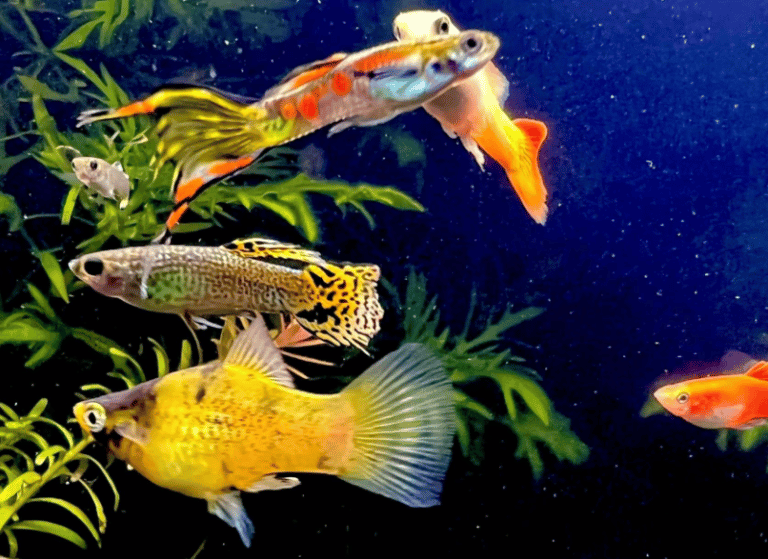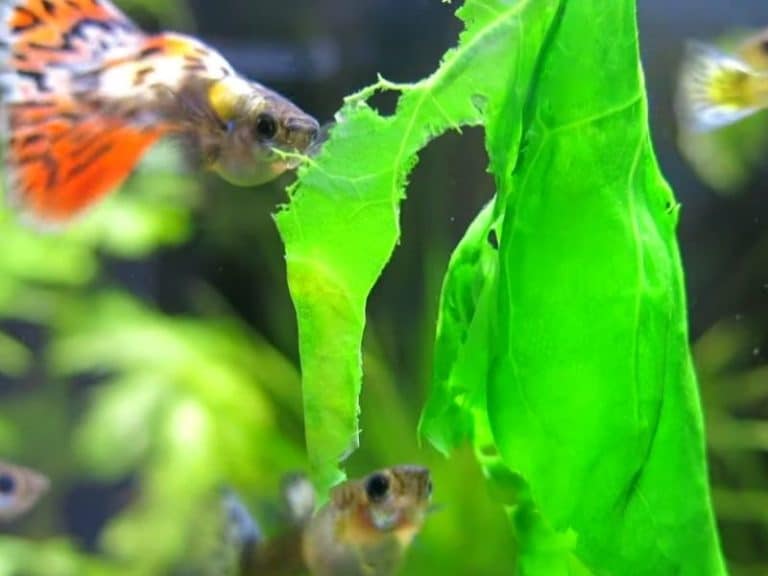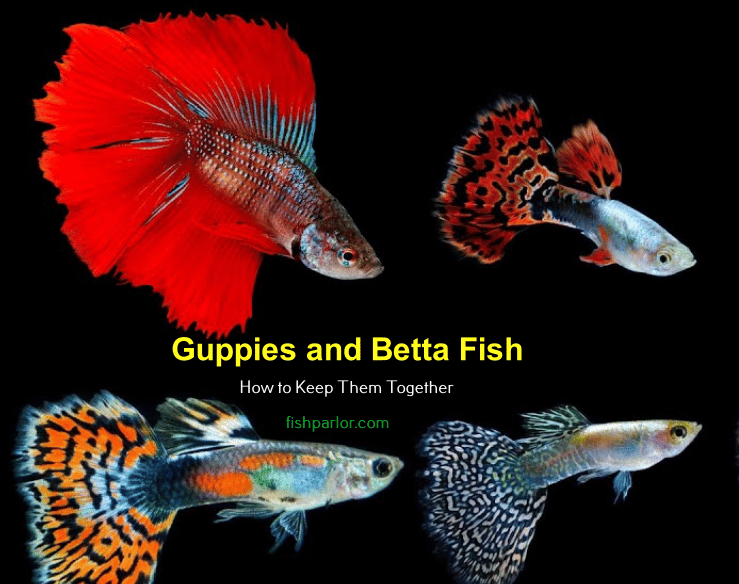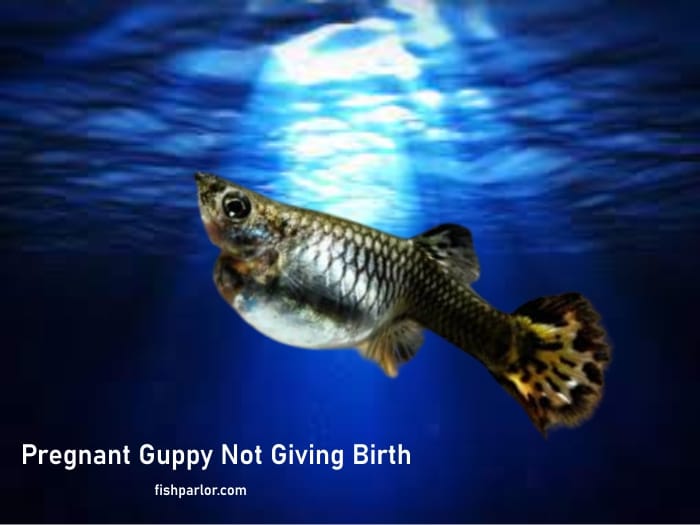Guppies are novice aquarist favorite fish because they are hardy, beautiful, and easy to maintain, aspects that starters are always looking out for. Unfortunately, fish suffer deformities and ailments that alter their original shape. For guppies, among the common deformities is having a curved back. Instead of the straight spine running from the head to the tail, the back breaks off and forms either a C or S-shaped back.
A guppy’s back can be curved due to several reasons including scoliosis, tuberculosis, and the swim bladder infection. Prevent and remedy these causes through quarantining sick fish, avoiding inbreeding, controlling the population, proper tank maintenance, antibiotics, and, in some cases, euthanasia.
Symptoms of a bent back in guppies
Some of the symptoms to look out for when your guppy is having a bent back problem include:
1. Lopsided Swimming
No matter how much the guppy tries to swim straight on, it tends to accelerate to an angle. You will observe the unnatural swimming position as the guppy tries to keep a straight angle.
At some point, the guppy will try to float or sink unwillingly. It could also swim upside down even after several attempts to swim normally.
2. Protruded Eyes
As the back begins to curve, the guppy’s eyes appear sharp and are more protruded. The organs behind the eyes begin pushing them up, leaving them exposed.
3. Loss of Appetite
The affected guppy may not have all the excitement during the feeding time and will appear disinterested as others scramble for food. While guppies eat algae, they may not be interested in it either when sick.
4. Bullying
The other healthy guppies can quickly identify one who is out of shape. They view the affected guppy as weak and may constantly pick on her. That should lead you to look closely into why the specific guppy is constantly being bullied.
5. Restlessness
Most of the time, the affected guppy will appear lethargic and disinterested in most activities going on in the tank. They may be secluded, and you may think they are just lazing around. That alone should prompt you to look closely at the chances of a bent back.
If you’re wondering why your fish died from a bent back, it could be due to not addressing the underlying cause of the bent back.
Why is my guppy’s back curved?
Several causes can make your guppy’s back curve. The main ones include:
| Cause | Remedy |
| Scoliosis | Euthanasia |
| Tuberculosis | Quarantine, antibiotics, euthanasia |
| Swim bladder infection | Proper aquarium maintenance |
1. Scoliosis
This is the most common cause of curved backs in guppies. Scoliosis, like in humans, is the sideways curvature of the spine.
In guppies, the condition appears at the larvae stage, and since then, the fry develops hunchback signals.
Causes of Scoliosis in Guppies
Scoliosis is a medical condition that causes the spine to develop a C or S-shaped spine. The condition mostly affects the guppies at the larvae or fry level. However, in some cases, it affects the adult female guppies due to pregnancy which applies pressure on the abdomen, making it develop curvature.
Scoliosis in guppies can be a result of several aspects, including:
- Inbreeding
- Poor feeding
- Chemicals in the tank
- Poor conditions in the tank
- Inheritance
Any of these issues may lead to a curved back in guppies.
Inbreeding
The guppies will keep inbreeding if you take so long before introducing new breeds to the tank. This produces weaklings that can be compromised healthwise.
Introduce new genetic variations to your tank every few months to bring in a new strain to the existing breed, counter the inbreeding problems and reduce birth defects.
Poor feeding
Diet is a major concern for the guppy’s health. A poor diet can influence the scoliosis condition.
To avoid this, ensure you feed the guppies quality feeds to strengthen their muscles and help them ward off common ailments.
Poor conditions in the tank
Although the guppies are hardy, they also need proper care. Guppies are high breeders – with the right conditions, the female will keep giving birth, leading to overcrowding within the tank.
Prevent chemicals within the tank that could affect the guppies’ health, leading to scoliosis.
To create a conducive environment for the guppies, ensure enough light and oxygen. You can have some plants within the tank to boost the oxygen levels.
Hereditary
Scoliosis can be passed down through generations. That’s why it’s imperative to introduce new genetic strains to the tank after a while.
Also, as early as possible, eliminate defective fry that you spot to avoid creating a whole generation of guppies with a curved back.
How to Treat Scoliosis
Unfortunately, scoliosis in guppies doesn’t have a cure, and the best way to eliminate the affected guppies is to euthanize them.
2. Tuberculosis
Fish TB causes curved backs in guppies. Guppies can also suffer from tuberculosis which consequently could make their back curved. Tuberculosis in guppies is caused by the mycobacterium marinum bacteria present in the tank.
Symptoms of Tuberculosis in Guppies
Besides the curved back, guppies that are infected with tuberculosis will project these signs:
- Poor appetite: The affected guppies will show disinterest in feeding even on favorite quality meals. Any guppy having problems with feeding should alert you of an underlying ailment such as TB.
- Skin infections: Tuberculosis in guppies affects the skin. You can spot some scales coming off and discolored patches.
- Restlessness: Affected guppies tend to keep to themselves and act disinterested in most activities happening within the tank.
- Popping eyes: Eyes don’t lie when it comes to the guppies. Consequently, you will notice that they become more projected to the outside.
- Constant bullying: Guppies quickly identify a weakling among them and will constantly pick on them. Since guppies cannot live with dwarf puffer fish and many other breeds, bullying by other fish species may not be necessarily a sign of sickness.
If you notice any one or a combination of these symptoms, it could be tuberculosis.
How to treat Tuberculosis in Guppies
Tuberculosis spreads fast within the tank, and this calls for your fast-acting to mitigate the effects.
First, you need to eliminate any sick guppy to counter further spread. Secondly, consult the professionals on the best antibiotic depending on the extent of the ailment. Antibiotics such as Kanamycin are used but only under the instructions of a professional.
The chances of mitigating tuberculosis in the guppies are slim unless you act fast. Your next best alternative would be to euthanize the guppies.
3. Swim Bladder Infection
Swim bladder infection is a common phenomenon in guppies. It’s an ailment that affects the swim bladder, consequently affecting the guppy’s overall performance, which will most likely lead to a curved back in the guppies.
A swim bladder refers to an internal organ in the guppy filled with gas, and it’s critical as it aids the guppy in maintaining its buoyancy.
The swim bladder disease can result from a combination of factors or a single aspect. Some of the common causes of the swim bladder disease include:
- Unbalanced water temperatures
- Bacteria present in the tank
- Cysts in the guppies’ kidneys
- Parasites within the tank attacking the guppies
- Bloating
Any one or several of them can lead to this disease.
Symptoms of Swim Bladder Disease
Due to the different potential causes, the other symptoms can be easily identifiable. Check out these signs:
- Constipation: This is the clearest sign that the guppy is suffering from swim bladder disease. The protruding belly will push up the spine and make the guppy develop a curve on the back.
- Asymmetrical swimming: The guppy will swim at an unnatural angle, and no matter the effort to swim in a straight line, it retreats to lopsided swimming.
- Floating: The guppy may try to maneuver within the tank, but it keeps floating on top.
- Problems with turning: The guppy may have issues with staying upright or turning to swim across the tank.
- Sinking: The guppy will appear restless and will mostly keep sinking to the bottom of the tank.
These are the main causes of a curved back in guppies. However, you can mitigate them by ensuring you apply best practices when rearing the guppies. Avoid inbreeding, and allow enough light and oxygen in the tank. Maintain hygiene and proper diet.
With that, you will be steps ahead in countering the risks of a curved back in your guppies.
How to Euthanize Sick Fish
When fish get sick, they may not have remedies for their treatment especially for serious illnesses such as scoliosis and tuberculosis. To protect the rest of the fish, you should isolate and euthanize the sick fish in a humane way.
Boiling, suffocating, freezing, or using carbon dioxide to kill the fish aren’t humane methods since the fish experience pain before dying. Instead, use clove oil which works as an anesthesia that makes the fish unconscious, stops breathing and introduces hypoxia (lack of oxygen) that kills the fish in about 10 minutes.
Use clove oil as follows:
- Mix clove oil in warm water then slowly add it to the aquarium water. Add about 400mg of clove oil per liter of the aquarium.
- Check the tank after 10 minutes for gill movement. If there is no gill movement, the fish are dead.
Avoid adding too much of the clove oil in the tank at once since it’ll excite the fish and further harm them.
Conclusion
Guppies are beautiful and appealing to the eyes. Keep a keen eye on them, though, so you can eliminate any affected guppy on time to avoid the problem of having others born with a similar disability.
Constantly introduce new strains to the tank to create a strong, healthy breed. In the meantime, enjoy the sight.
References
Washington University in St. Louis. Sneaky male guppies affect food web dynamics.
California Polytechnic State University. BEHAVIORAL AND HORMONAL FLEXIBILITY ACROSS LIGHT ENVIRONMENTS IN GUPPIES (POECILIA RETICULATA).
The University of Maine. Natural Selection and Its Interactions with Migration and Population Demography: Experiments in Wild Guppy Populations.




